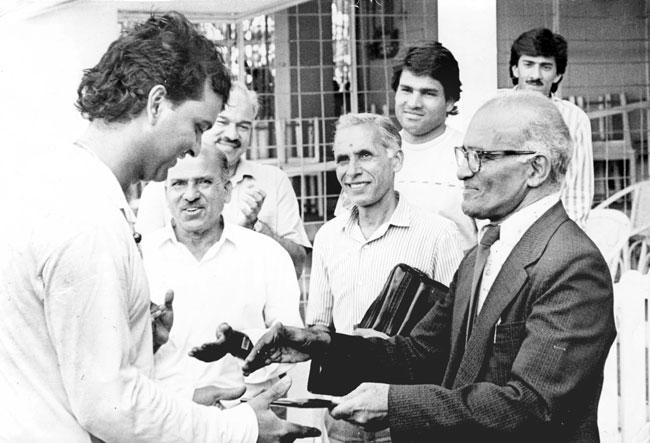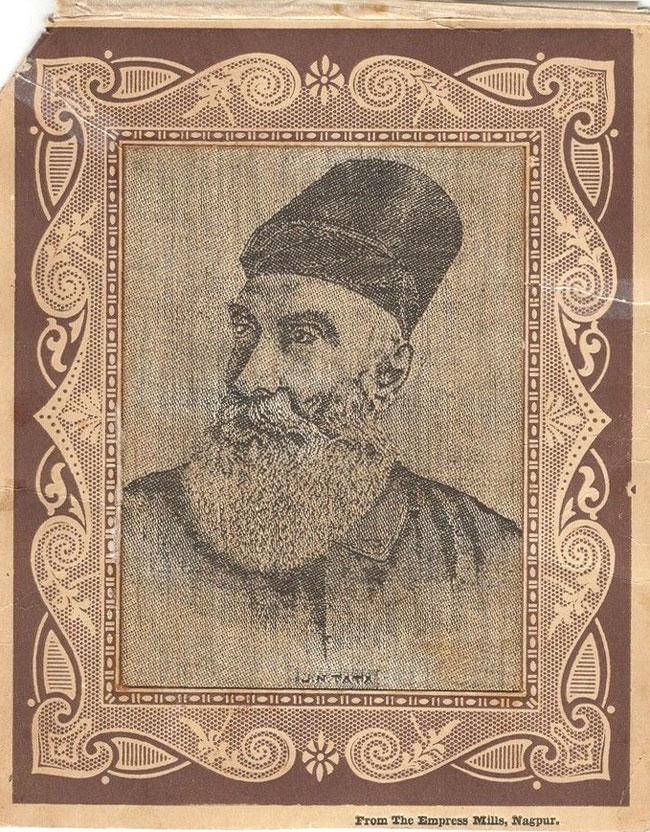The city - sliced, diced and served with a dash of sauce

Welcome Dani, but don’t forget Joe
Mumbai cricket bosses have reportedly made an unprecedented appointment, that of a fielding coach (former Ranji Trophy all-rounder Amit Dani), for the remainder of their disappointing season. Increasing the number of support staff is the norm in today’s cricket and the move to make the fielders more agile is a welcome one.
ADVERTISEMENT

Shishir Hattangadi (left) receiving an award from then Mumbai Cricket Association president Madhav Mantri (right) at Wankhede Stadium in the course of the 1988-89 Ranji season. A clapping P K ‘Joe’ Kamath is to Hattangadi’s left. Pic/MiD DAY Archives
However, former Test batsman Sudhir Naik, who led Mumbai to a Ranji title when six seniors were away battling the West Indies in 1971, says Dadar Union’s champion fielder P K ‘Joe’ Kamath was probably Mumbai’s first fielding coach in the 1970s.
Mumbai were masters when it came to the Ranji Trophy and there were not too many slouches in the fielding department in the 1970s because of Joe’s efforts.
Naik remembers Joe spending an hour after the team’s daily net practice and putting them through the grind for catching and fielding drills. Even the most illustrious of players had to take their daily quota of catches.
If you dropped catches, more would come your way. Joe’s fielding brilliance was endorsed by Sunil Gavaskar in his book Sunny Days. “An absolutely brilliant fielder anywhere,” Gavaskar wrote. “He took amazing catches at gully.
I remember the time when after splitting his palm catching a full-blooded Budhi Kunderan hit, he just ran to the doctor round the corner, had his palm stitched and was back again at gully.” Joe passed away in 2010, but his contribution to Mumbai cricket should never be under-estimated.
Woven into memory
Today is the 175th birth anniversary of J N (Jamsetji) Tata, founder of the empire that spans practically everything from steel to silk — and a whole lot else. Reader Nergis Dordi wrote in to us, recalling that at the time of Tata’s centenary, her father Burjor Byramji Desai had woven a handkerchief-sized portrait of the patriarch.

The woven portrait of Jamsetji Tata. Pic/Courtesy Ebay
It was the perfect tribute, as Desai was the weaving master at mill no 5 in Empress Mills, Nagpur, which was where the Tata saga began. When we recalled the old story and looked for the portrait, we found it up on eBay. Here’s hoping it finds a loving, appreciative admirer. There could be no better tribute to the founding father of the Tata empire. Happy birthday, JNT!
Chowk talk
The television show Satyamev Jayate had generated a buzz with its close look at grim social realities, last season. So when the first episode of season 2 aired yesterday morning, all eyes were on their TV screens — almost. In one colleague’s neighbourhood of Gamdevi, in South Mumbai, a chowk (square) was to be named after a local dignitary, and the function was set to be held at the same time as the TV programme. When the guests on the dais began their speeches over the sound system, it drowned out everything else, including the sound from the TV. Just a coincidence...?
Fiddling on the roof
Real estate in Mumbai is precious in more ways than one and the tussle for every possible square inch extends even to the rooftops. The Brihanmumbai Municipal Corporation’s agenda for March includes two items that are telling in their extreme views. But strangely, both deal with the treatment of building rooftops.
Corporator Parminder Bhamra proposes that the roofs of buildings be used to grow grass (not the kind that hipsters may be thinking of...!) so that the buildings will get cooled. He also advocates solar panels on rooftops to generate energy. We’re fine with the solar energy, but growing grass will mean that it has to be watered… which in turn means water seepage into the building structure.
And fellow corporator Rahul Shevale’s item on the agenda deals exactly with this water seepage. He says buildings should have sheds erected over them to protect them from seepage and resultant structural damage. We would like to see these two items discussed... perhaps together!
Contributed by: Sundari Iyer, Sujit Mahamulkar, Clayton Murzello, Hemal Ashar, Vidya Heble
 Subscribe today by clicking the link and stay updated with the latest news!" Click here!
Subscribe today by clicking the link and stay updated with the latest news!" Click here!






